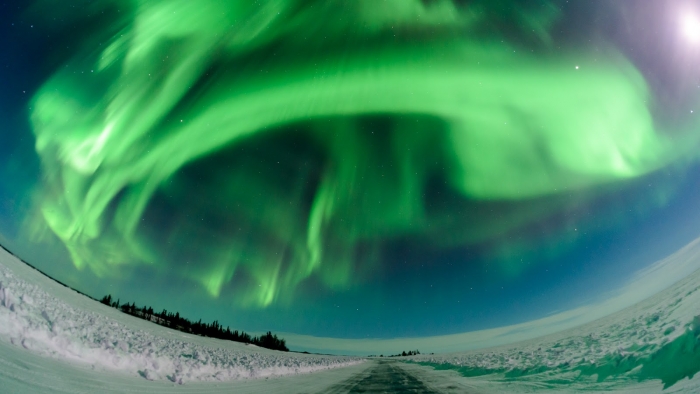For space lovers, a trip to the fringes of the galaxy is only a few metro stops away from McGill’s downtown campus at the Rio Tinto Alcan Planetarium. One of the facilities operating under Montreal’s Espace pour la vie at the Parc Olympique, the planetarium currently offers six films exploring topics ranging from intergalactic travel to the possibility of extraterrestrial life, with a single ticket purchase allowing admission for two films. Viewers can lean back and relax on the bean bag chairs in the Chaos Theatre and be transported through space and time in the traditional planetarium-style Milky Way Theatre, far beyond the stresses of rapidly approaching midterms.
Space Next
Space Next is a 25-minute film that explores why the allure of space’s great unknown has called to humans through our history on earth. From the Wright brothers first flight, to the Cold War Space Race, to modern day deep space explorations, Space Next challenges viewers to consider humanity’s potential future among the stars, allowing them to ponder what life on other planets could be like. Images of human life on Mars, leisurely trips to the moon for the wealthy, and even extractive economies on the Moon will leave viewers both amazed and hopeful for humankind’s interstellar future.
EXO
EXO tackles the big questions about our universe: Are we alone? Could Einstein’s theory of relativity have a loophole? A clear, 360-degree view of Montreal’s night sky leaves the audience awe-struck and curious. EXO begins by exploring the early origins of astronomy, followed by the attempts of modern scientists to discover life beyond Earth. Viewers will leave the Milky Way Theatre refreshed and excited to look more closely at Montreal’s night sky.
Edge of Darkness
Edge of Darkness is a 25-minute film describing meteorites, comets, asteroids, and dwarf planets, like Pluto, found in the Kuiper Belt, a large debris field at the edge of our solar system. Spectators learn about the birth of our solar system, the anatomy of comets, and close-call comet collisions. As humanity’s expansion into space is becoming a possibility, the film discusses how scientists and corporations are looking to comets, asteroids, and Earth’s other cosmic neighbours to serve as future docking stations and sites of resource extraction. To witness these rogue bodies in action, mark the Lyrid meteor shower on your calendar—April 22, just before dawn.
KYMA, Power of Waves
KYMA, Power of Waves is Montreal filmmaker Phillip Baylaucq’s wordless artistic representation of space and earth, produced by the National Film Board of Canada. KYMA, meaning ‘waves’ in Greek, portrays an introspective journey from the outer reaches of space down to subatomic particles and everything in between. Baylaucq’s film depicts the acoustic, electromagnetic, gravitational, and quantum mechanic waves of the cosmos through musical and visual stimuli. Unusual camera shots and oscillating visuals are accompanied by Robert Marcel Lepage’s modern score, allowing the mind to become immersed in the waves of space. KYMA is not your typical planetarium show—those who seek a unique and thought-provoking depiction of space made specifically for the domed screen at the Milky Way Theatre should definitely plan a trip.
Whatever you decide to see, stick around after the show to explore interactive exhibits outside the theatre. Learn how space technology can improve agriculture, synthesize chemical compounds on touchscreens, and see one of the oldest rocks on earth. Visitors will leave the planetarium feeling inspired by the grandeur and mystery of our common home, the universe.
With a student card, McGill students can receive discounts of 25 per cent for any planetarium show. Space Next/EXO and Edge of Darkness/KYMA will run until April 15 at the Rio Tinto Alcan Planetarium.









